PUHI — Kaua‘i Community College student Shyla Villanueva, professor Dr. Brian Yamamoto of the Cognition Learning Center, and Dr. Ruth Aguraiuja of the Estonia Tallinn Botanic Garden/National Tropical Botanical Garden discovered gametophytes recently in the KCC natural sciences laboratory.
“All of this during the COVID-19 shutdown,” Yamamoto said. “We had limited access to the lab to check on progress, and things were closed down. But the spores must have liked the air conditioning. This is the first time for growing this fern in laboratory conditions.”
Villanueva, working on a botany-directed studies project, the germination and life cycle of Adenophorus tamariscinus, was excited to make the discovery during one of the laboratory checks.
“Adenophorus tamariscinus is known as ‘wahine noho mauna,’ and is an endangered native fern,” said Villanueva, who holds a certificate in Hawaiian botany from KCC. “We found ours on the Pihea Trail growing on lehua bark.”
Yamamoto said the success of germinating the fern from spores is an attempt at growing the rarest of the rare — Adenophorus periens.
“We need to be able to study and get this variety to succeed before we even begin to look for the periens,” he said.
Aguraiuja, who has been visiting Hawai‘i through NTBG on the South Shore to study ferns for at least 16 years, said the periens is very endangered, the last known fern on the Big Island perishing in 2015.
“We did find some on Moloka‘i,” the Estonian scientist said. “But it was already dead. We took a lot of photos and have been studying it because we need to know more about it. This type of fern has green spores, which means they occur naturally with chlorophyl in them. We don’t know much, except they have a very short viability period. This is what we need to study — how long can we keep them viable?”
Aguraiuja said with the success of germinating the fern from spores, they need to see if the gametophytes advance to sporophyte stage. Once that takes place successfully, the next step would be to re-introduce the fern back to the wild successfully.
“There is so much going on that we don’t understand,” said Villanueva, who switched her course of study following receipt of her degree in art. “I get a lot of backlash from my family. There are so many things happening, and we have no idea of (introduced species) being fit for our environment. They tell me, ‘We can’t use it, so why does it matter?’ Not everything is made for us — interconnectivity, relationships and sustainability.”
•••
Dennis Fujimoto, staff writer and photographer, can be reached at 245-0453 or dfujimoto@thegardenisland.com.


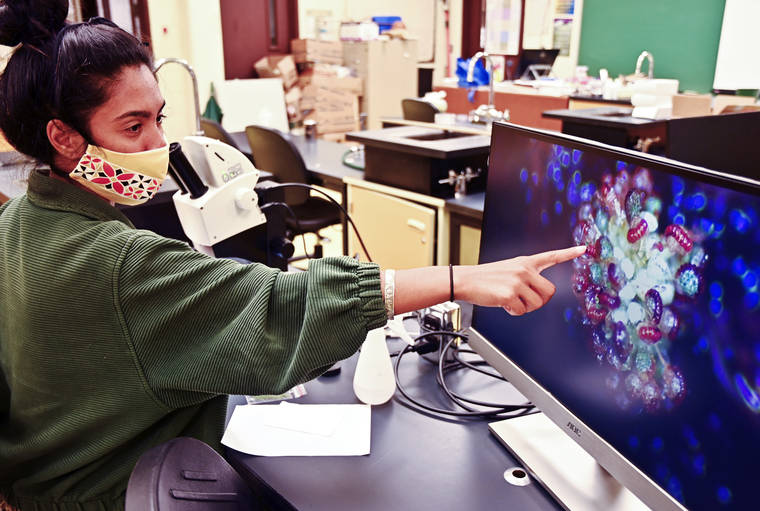
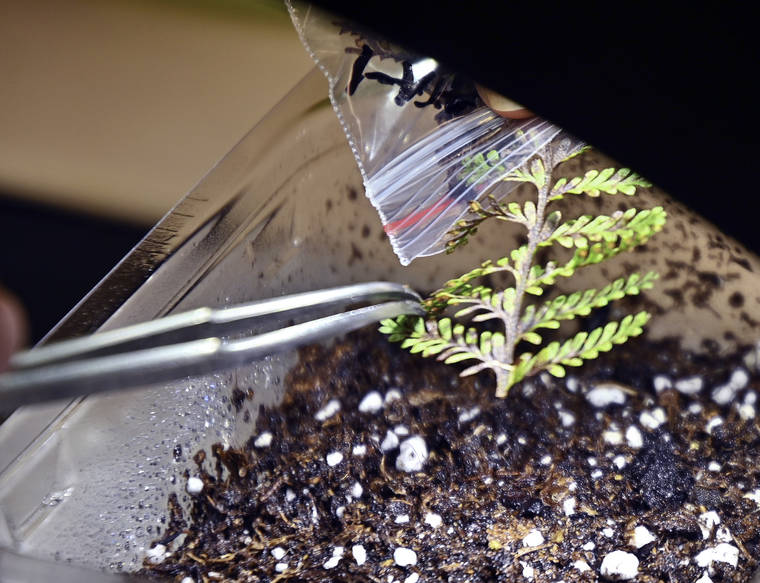
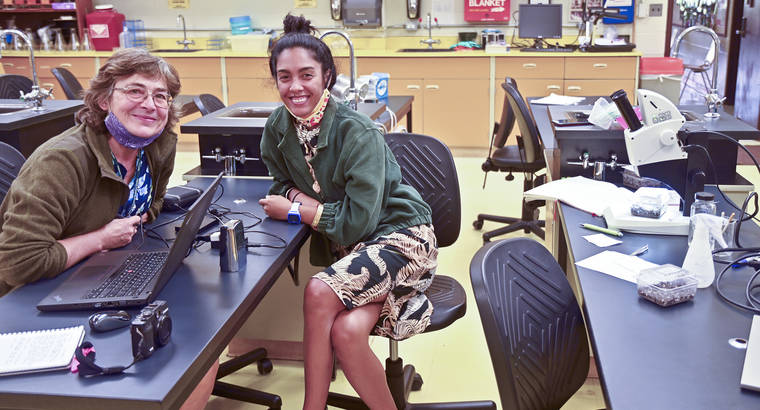
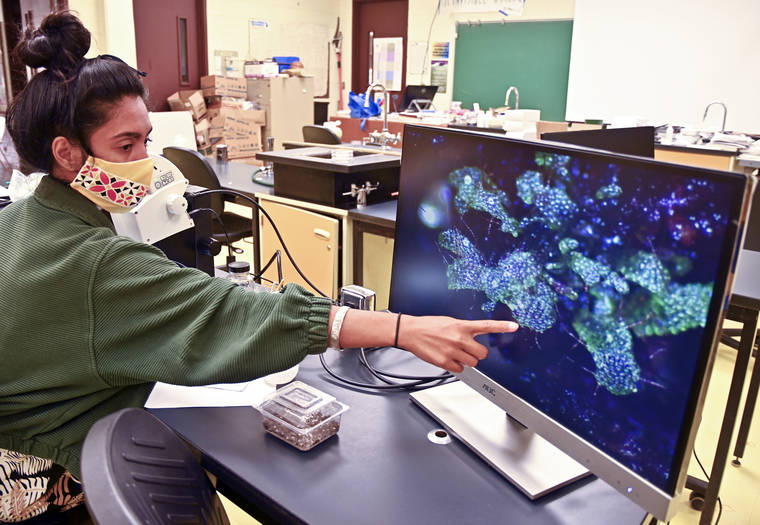
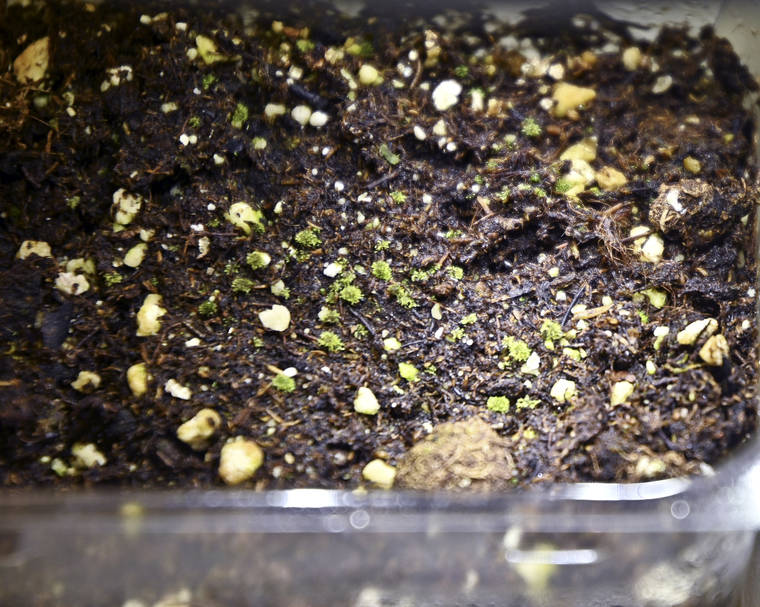
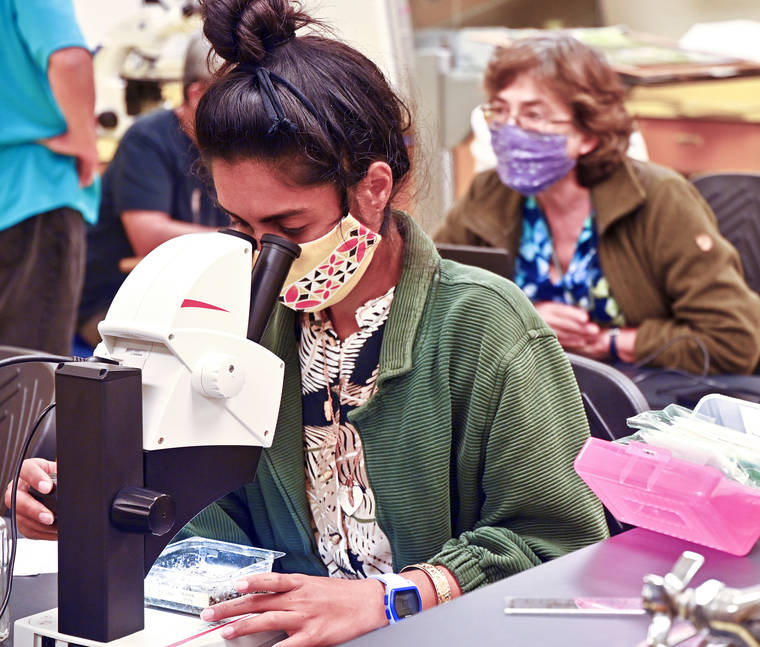
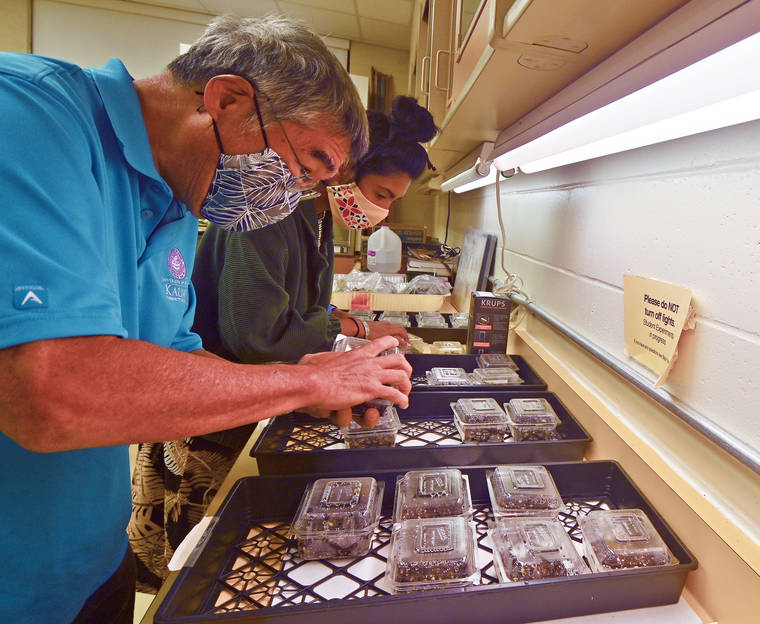
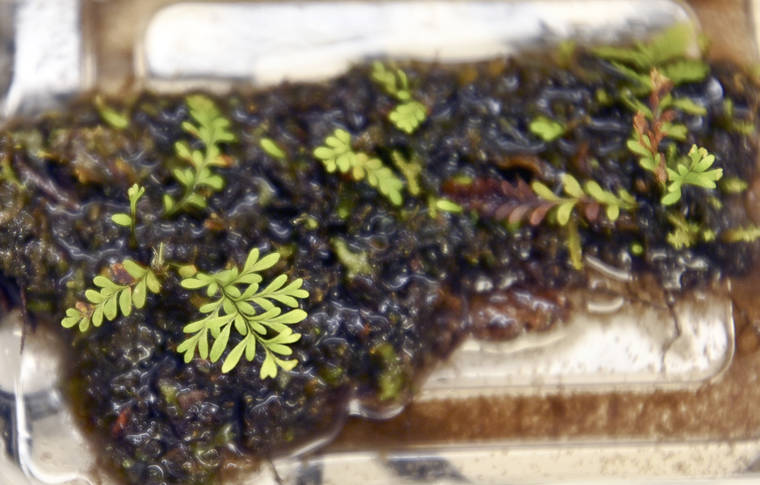
Aloha,
Just wanted to clarify on the misquote the genus Adenophorus is endemic to these islands; A. tamariscinus is a common wet forest endemic fern and A. periens is endangered.
Mahalo nui!
Shyla V.
“We took a lot of photos….” So why not show one or two so we know what this special fern looks like?